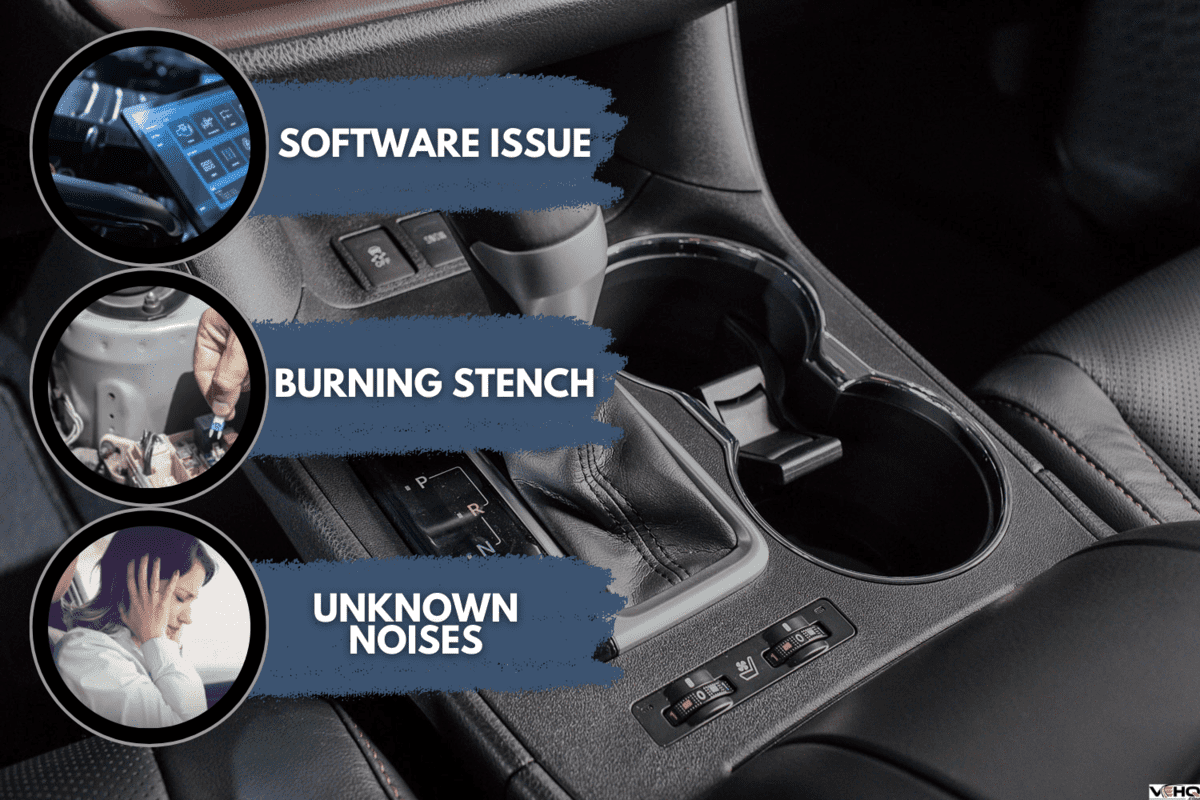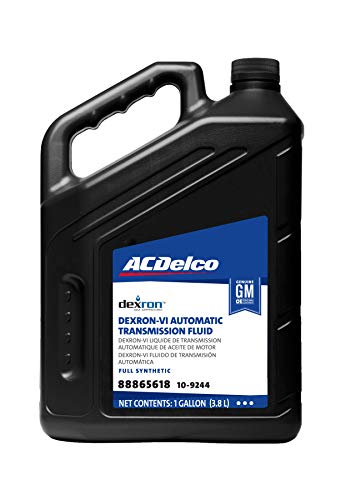When you press down on the gas in your Toyota Sienna, the aggressive jerking motion feels like a bucking bronco. If that sounds like you, you’re probably wondering why the minivan is jerking so much when it accelerates. What can you do to fix it? We researched and consulted with different experts for you to give you this answer.
A Toyota Sienna may jerk as it accelerates because of underlying issues like a vacuum leak or a bad transmission range sensor. Park the vehicle in a safe site and investigate the main cause of the unknown movement. Then, you can proceed with the appropriate DIY solution or contact professional automotive services for help.
You should continue reading as we talk about these possible causes of a Toyota Sienna's jerking when it's accelerating in greater detail. Go through this post and you'll also see the possible solution for each potential principal problem.
3 Causes Of Toyota Sienna Jerking When Accelerating (And Their Possible Fixes)

Vacuum Leak
A vehicle’s engine, including the one in a Toyota Sienna, typically requires the correct mixture of air and gas to operate optimally. You can find vacuum lines to help deliver the appropriate amount of air throughout the engine block’s different assemblies.
However, a crack, gap, or hole in a vacuum line may make your Toyota Sienna jerk when you accelerate the minivan. It’s because the leakage reduces the engine block’s performance, particularly as it loses control of the RPM.
How To Fix

Finding and sealing the vacuum leak in your Toyota Sienna’s engine may help get rid of the jerking motion as the minivan accelerates. So follow these general steps when you’re ready:
What You’ll Need
- Propane regulator
- Propane cylinder
- Replacement vacuum hose (optional)
Step-By-Step Guide
Step #1: Locate The Leak
First, check if any of the vacuum lines are secure in their correct terminals. Reconnect and secure those loose lines promptly if found. At this point, you can check if reconnecting those lines solved the problem. If not, then the issue may lie elsewhere.
While the engine is still running, you may hover your hand above the engine to search for air escaping from the vacuum lines. Remember that you shouldn’t put your hand into the engine block while the engine is running as it can cause serious injuries. Take note of the leak’s location once you find it.
Step #2: Seal The Leak
Turn off the Toyota Sienna’s engine if you turned it on for the initial inspection. Next, put together the propane regulator assembly. Then, open the propane regulator without igniting the gas and use it on the different vacuum lines. Check for anomalies in the propane application's performance to find the leak's location.
The idea here is that propane may help increase the temperature of the rubber material used on the offending line. If used correctly, applying the assembly should help seal the fairly small crack or gap that causes the leakage.
However, if the problem comes from a large crack or hole, you may need to replace the offending vacuum line instead of using the propane assembly.
Warning: Propane is a combustible substance. Avoid using it on a hot engine block and remove all flammable items in your working space as you’re using the propane assembly.
Check out this replacement vacuum line set on Amazon.
Watch this video to gain additional insights on how to find and seal a vacuum leak in a car:
Bad Transmission Range Sensor
A Toyota Sienna’s transmission range sensor generally functions by recording the minivan’s transmission speed. If it works as intended, it should identify the correct gear and speed to use with minimal to no help from the driver.
If the transmission range sensor becomes faulty, the Sienna may jerk when accelerating. Other possible symptoms to watch out for are:
- The minivan has trouble or fails to start
- Transmission gear slips
- The Toyota Sienna enters limp mode
How To Fix
Replacing the bad transmission range sensor may help restore the Toyota Sienna’s normal functions and may eliminate the unwanted jerking motion when you accelerate the vehicle.
Bear in mind that this procedure typically demands sufficient automotive experience and know-how. Don't hesitate to contact a professional automotive service to handle this replacement job for you if you believe you lack the confidence and skill to complete the task.
But if you’re ready and willing to continue, you can proceed by following the steps highlighted in the video below. It's important to mention that the clip shows a transmission range sensor replacement job for another car. Nonetheless, the process should still be similar for your Toyota Sienna:
Check out this replacement transmission speed sensor on Amazon.
Low Transmission Fluid
All vehicles, including Toyota Sienna models, need sufficient supplies of transmission fluids. Take note that the transmission fluid’s job is to lubricate a vehicle’s moving parts. But this liquid can run out over time.
If your Sienna minivan lacks transmission fluid, it may encounter problems like the jerking motion whenever it accelerates. It should also help in keeping the transmission system from overheating.
How To Fix

Refilling your Toyota Sienna’s transmission fluid may help do away with the sudden movement as you press the gas pedal. Here are the general steps to help you complete this task:
What You’ll Need
- Floor jack
- Jack stands
- Wheel chocks
- Drain pan
- Transmission fluid
Step-By-Step Guide
- Park the vehicle on flat and level ground. Engage its hand, parking, or emergency brake afterward.
- Turn off the engine and allow it to cool for a few minutes.
- Raise the minivan using the floor jack and install jack stands.
- Chock the wheels that are still on the ground to prevent the vehicle from rolling while you’re working on it.
- Place a drain pan underneath the transmission fluid container.
- Remove the transmission fluid drain plug and wait for all the liquid to escape. Return the drain plug afterward.
- Open the hood and locate the cap for the transmission fluid container on that side. Remove that component and set it aside temporarily.
- Place the funnel into the opening and pour the recommended amount of transmission fluid.
- Return the container’s cap and lower the vehicle to the ground.
- Remove the wheel chocks and turn on the engine. Go for a test drive in the Toyota Sienna to check if the jerking problem persists.
Check out this product on Amazon.
Warning: Don’t mix transmission fluids in your Toyota Sienna. Always consult the vehicle’s owner’s manual or contact the minivan’s manufacturer to ensure that you’re using the correct product.
Is It Safe To Drive A Jerking Toyota Sienna?

Avoid driving your Toyota Sienna if the jerking motion doesn’t seem to disappear. If you’re unsure of your minivan’s current status, you may need to call for a towing service to pick up the vehicle. That way, the service can send the minivan to a reliable garage for troubleshooting and repairs.
At What Mileage Does Transmission Fail?
Automatic transmission systems, especially those in Toyota Sienna minivans, may start encountering signs of failure by the 80,000- to 150,000-mile mark. On the other hand, manual transmission systems may fail sooner than 80,000 miles. However, vehicle owners can reduce the risks of early transmission system failure by following strict maintenance routines.
What Can Be Mistaken For Transmission Problems?

A Toyota Sienna that’s jerking may not always mean that the minivan has a transmission problem. Pay attention to the accompanying symptoms to help you diagnose the problem’s origins.
Some of the possible symptoms to watch out for are:
Software Issue
Aside from the jerking motion, pay attention if any of the electronic devices in the minivan are malfunctioning. If so, the vehicle’s control board might have a software error or glitch.
Inspect the minivan’s control board for signs of short circuits. You can also investigate the wiring for frays, burns, or disconnections that might be the culprit to the vehicle’s electrical problems.
Burning Stench
If the Sienna’s jerking action comes with a burning smell, it may have other underlying problems. Some potential suspects that caused these issues are:
- Blown fuse
- Faulty compressor
- Engine overheat
- Worn brake pads
Unknown Noises
Listen to strange sounds coming from the minivan, particularly as it accelerates. If you hear noises like clunking, whirring, or hissing, it might be best to pull over and open the hood to investigate the racket. Proceeding to drive the vehicle while these sounds persist may increase the risks of on-road accidents and injuries.
Final Thoughts

Remember to troubleshoot your Toyota Sienna before attempting to repair its jerking issue. Once you find the main cause of the problem, you may proceed by using the appropriate DIY fix. Otherwise, get in touch with an industry professional for expert help.
If you’re looking for answers to other Toyota Sienna concerns, check out these other great reads:



